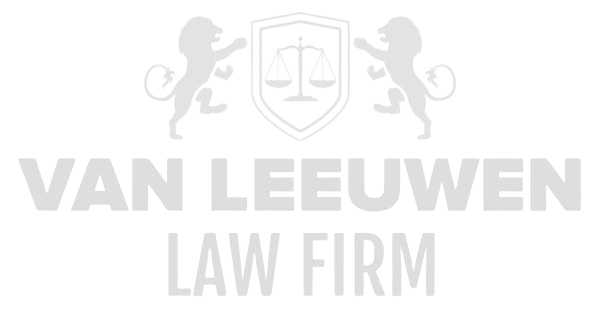The healthcare, life sciences, and pharmaceutical sectors constitute the cornerstone of modern civilization in terms of health and well-being. This domain spans fundamental scientific research to the implementation of advanced treatments and technologies in clinical settings, profoundly affecting the lives of billions of people worldwide. Within this field, continuous efforts are made to find solutions for some of the most complex and persistent health problems, ranging from chronic diseases such as diabetes and cardiovascular conditions to rare genetic disorders and infectious diseases with pandemic potential. The ability of this sector to integrate science, technology, and clinical expertise forms the core of medical progress and preventive healthcare.
In an era marked by unprecedented technological advancement, this sector functions as a nexus where science and practice converge. Researchers, clinicians, and industry partners collaborate to develop treatments that address not only the symptoms of diseases but also their underlying causes. The landscape of healthcare and pharmaceuticals is defined by an ongoing dialogue between research and application, in which clinical feedback directly contributes to scientific insights and, conversely, scientific discoveries inform clinical practice. At the same time, the sector faces complex ethical, legal, and societal challenges, including the regulation of new drugs, access to care, and the balance between profitability and public health. Addressing these challenges requires not only scientific and technical expertise but also a profound understanding of regulatory frameworks, societal expectations, and international collaboration.
Healthcare
The healthcare sector encompasses a wide spectrum of institutions, professionals, and services, all aimed at promoting, maintaining, and restoring health on both individual and collective levels. Hospitals form the core of this system, providing complex, multidisciplinary care, including acute medical interventions, surgical procedures, intensive care, and specialized diagnostics. These institutions operate within a sophisticated network of medical specialists, nurses, support staff, and technology, where coordination of care and operational efficiency directly impact patient outcomes and safety. The capacity of hospitals to integrate medical innovations while complying with strict quality and safety standards largely determines the effectiveness and sustainability of the healthcare system.
Clinics and general practitioner practices serve a crucial role as primary care providers, ensuring access to medical services and functioning as gatekeepers to the broader healthcare network. GP diagnostics, preventive consultations, and referrals to specialized care are central to their function, while clinics often provide additional diagnostic and therapeutic services. These institutions are vital for early detection of health issues, reducing hospital admissions, and improving overall public health. Innovations such as telemedicine, mobile health platforms, and digital patient monitoring contribute to more efficient access to care and a higher degree of personalized treatment.
The challenges within healthcare are substantial and require a multidimensional approach. Cost management, improving accessibility, and maintaining high-quality care are persistent issues. Modern healthcare increasingly demands patient-centeredness, where individual needs and preferences are prioritized. Technological implementations, including electronic medical records and advanced data analytics, provide opportunities to optimize care pathways but also introduce complex privacy and security concerns. The ability of healthcare institutions to integrate these technological and organizational challenges determines the effectiveness and long-term resilience of the healthcare system.
Life Sciences
Life sciences represent a scientific domain focused on understanding the fundamental biological processes that govern life, health, and disease. This field encompasses disciplines such as genetics, molecular biology, microbiology, immunology, and biochemistry, with the goal of unraveling the complex biological mechanisms underlying physiological and pathological processes. Researchers in life sciences conduct detailed studies to understand disease mechanisms, identify new therapeutic targets, and develop innovative treatment strategies. This research forms the backbone of medical advancement and establishes a direct link between fundamental science and clinical application.
Biotechnology is a core component of the life sciences, applying biological systems and organisms to develop products and technologies with societal value. Examples include genetic modification, the production of new vaccines, the development of innovative pharmaceuticals, and the improvement of food crops. Technological advances within biotechnology have led to increasingly personalized treatments, where therapeutic strategies are tailored to the genetic and molecular characteristics of individual patients. This has profound implications for the effectiveness of therapies and the development of preventive health strategies.
Research in the life sciences requires intensive collaboration between scientists, clinicians, and industry partners. Achieving breakthroughs in this discipline depends on access to advanced laboratory facilities, large-scale data processing, and multidisciplinary expertise. Continuous progress in genomics, proteomics, and bioinformatics creates opportunities for personalized medicine, allowing treatments to be aligned with the unique biological characteristics of patients. This development not only transforms therapeutic possibilities but also redefines the role of prevention, diagnosis, and long-term disease management.
Pharmaceutical Industry
The pharmaceutical industry is one of the most complex and regulated sectors in the modern economy, responsible for the discovery, development, production, and distribution of drugs and vaccines. This industry plays a crucial role in treating diseases, improving public health, and extending life expectancy by providing effective therapeutic interventions. The process of drug development is intensive and involves multiple stages, from fundamental research and preclinical studies to clinical trials, regulatory approval, and large-scale production.
The research and development phase of drug discovery is particularly demanding, both scientifically and financially. New therapeutic compounds must be identified, modeled, and extensively tested for safety and efficacy, often over many years. Clinical trials in multiple phases are essential for establishing effectiveness, identifying side effects, and obtaining approval from regulatory authorities such as the FDA and EMA. At the same time, the industry must carefully balance innovation with ethical responsibility, ensuring that the interests of patients, investors, and society are aligned.
The pharmaceutical sector faces constant pressure to innovate while complying with strict regulatory standards. High research and development costs, long approval timelines, and the need for market accessibility create a challenging environment requiring strategic operation. Simultaneously, public debate over drug pricing and availability raises significant ethical and economic questions, highlighting the importance of ensuring access to essential medicines and the sustainability of healthcare systems. The future of the industry will depend heavily on the integration of technological innovation, international collaboration, and a strengthened focus on patient-centered solutions.
Trends and Future Developments
The healthcare, life sciences, and pharmaceutical sectors are undergoing unprecedented transformation, driven by technological innovation, societal expectations, and shifting epidemiological profiles. Digitization, artificial intelligence, big data analytics, and advanced medical technologies are profoundly changing the way diagnoses are made, treatments are selected, and care processes are managed. AI-based systems can analyze medical images with accuracy beyond human perception, develop predictive models for disease outcomes, and optimize treatment strategies based on individual patient data.
Sustainability and environmental responsibility are becoming central to the strategies of pharmaceutical companies and healthcare institutions. Reducing ecological footprints, minimizing waste streams, transitioning to renewable energy, and developing environmentally friendly manufacturing methods have become essential to meet societal and regulatory expectations. At the same time, the focus on personalized medicine provides enormous opportunities to develop treatments tailored specifically to the genetic, molecular, and physiological characteristics of patients, significantly improving therapy effectiveness.
Global health crises, exemplified by the COVID-19 pandemic, have highlighted the need for robust infrastructures for research, production, and distribution of medicines and vaccines. The ability to respond rapidly and effectively to infectious diseases requires close collaboration between research institutions, pharmaceutical companies, governments, and international organizations. This experience emphasizes the importance of preparatory measures, flexible production capacity, and global coordination in safeguarding public health.
Furthermore, the integration of digital and biotechnological innovations will shape the future of the sector. Advances in precision medicine, advanced diagnostics, digital monitoring, and data-driven clinical decision-making are transforming how health is managed, diseases are treated, and preventive strategies are developed. Organizations that successfully implement these transformations will set the standards for modern healthcare and substantially improve the quality of life for patients worldwide.
Financial and Economic Crime
The healthcare, life sciences, and pharmaceutical sectors occupy a position of extraordinary importance within modern society, serving as the cornerstone for public health, innovation, and the advancement of medical knowledge. These sectors do not merely provide treatments and medications; they embody the very mechanisms through which human life can be preserved, extended, and improved. Their activities encompass an immense array of functions, ranging from the discovery and development of novel pharmaceuticals to sophisticated biotechnological research, clinical trials of unprecedented complexity, and the meticulous delivery of healthcare services to populations with diverse needs. The financial and economic landscape within these industries is equally complex, presenting unique vulnerabilities that include fraud, corruption, misappropriation of resources, and manipulation of scientific and financial data. Addressing these threats necessitates not only rigorous oversight but also an unwavering commitment to integrity, transparency, and strategic governance that protects patients, institutions, and society at large.
Financial and economic crime in these sectors is not an abstract risk but a tangible threat that can undermine decades of research, erode public trust, and jeopardize patient safety. The stakes are exceptionally high: a single instance of fraud or corruption can result in the dissemination of ineffective or dangerous therapies, the misallocation of public funds, and the destabilization of healthcare systems on a national or even global scale. The intricate interdependence of regulatory compliance, clinical practice, and commercial operations means that every stakeholder—from pharmaceutical executives to clinical researchers—bears responsibility for maintaining the integrity of their respective domains. Vigilance, ethical fortitude, and the implementation of comprehensive risk mitigation strategies are essential to safeguard the sector from the corrosive effects of economic crime.
1. Fraud and Corruption in Research and Development
Fraud and corruption in the research and development phase of pharmaceuticals and medical technologies constitute one of the most insidious threats to the integrity of the sector. This encompasses actions such as falsifying experimental results, manipulating clinical trial data, and circumventing ethical guidelines in order to accelerate drug approvals. The consequences of such practices extend far beyond regulatory violations, directly threatening patient safety and undermining the credibility of scientific research.
A vivid illustration occurs when a pharmaceutical company deliberately exaggerates the efficacy of a new drug by falsifying laboratory or clinical trial data to secure approval from regulatory authorities. The approval of a drug under these conditions can result in the commercialization of a product that is ineffective or potentially harmful, putting countless patients at risk. Addressing these vulnerabilities requires the strict enforcement of ethical standards, rigorous internal auditing, and full transparency in clinical research. A culture of integrity must be embedded in all stages of R&D, ensuring that the pursuit of scientific advancement never compromises ethical principles.
The implementation of robust regulatory and organizational controls is paramount. Ethical oversight committees, independent review boards, and external audits act as critical deterrents against fraudulent activity. Beyond compliance, the cultivation of an ethical mindset within research teams, supported by ongoing education and accountability mechanisms, serves as the foundation for sustaining trust in medical innovation.
2. Misuse of Government Funds and Subsidies
Government funding and subsidies are vital for enabling groundbreaking research, supporting healthcare programs, and fostering innovation. Yet, these financial mechanisms are susceptible to misuse, which may involve misallocation of resources, fraudulent expense claims, or diverting funds for purposes outside the original scope of the grant. Such abuses can lead to substantial financial losses and diminish the efficacy of programs designed to advance public health.
An example of this misuse occurs when organizations submit falsified claims for research expenses that were never incurred or redirect government subsidies to projects not outlined in the initial funding application. The ramifications extend beyond immediate financial harm, eroding public confidence in institutions and weakening future funding opportunities for critical health initiatives. To mitigate such risks, healthcare organizations and regulatory authorities must establish stringent oversight, clear usage guidelines, and transparent reporting systems.
The preventive framework requires regular audits, rigorous approval procedures, and the fostering of an organizational culture of accountability. By promoting ethical stewardship of public resources, institutions not only safeguard taxpayer funds but also reinforce the credibility and effectiveness of research and healthcare programs.
3. Fraud in Insurance Claims and Healthcare Reimbursements
Insurance and reimbursement fraud represents a persistent and costly challenge within the healthcare sector. It includes fraudulent claims for services never provided, exaggeration of medical conditions to receive higher compensation, and deliberate misrepresentation of patient records. Such practices escalate costs for insurers, place undue pressure on healthcare systems, and ultimately increase financial burdens for patients and taxpayers.
Consider the case where a healthcare provider submits false claims for treatments that were never administered or manipulates patient data to obtain inflated reimbursements. These fraudulent activities generate significant financial losses and compromise the integrity of healthcare delivery. Effective prevention depends on strict verification processes, routine auditing, and the deployment of advanced analytics and artificial intelligence to detect irregularities and suspicious patterns.
Furthermore, fostering ethical behavior within healthcare organizations and providing staff training in fraud prevention are indispensable. The combination of technological vigilance and human accountability creates a multi-layered defense against insurance and reimbursement fraud, thereby preserving both financial stability and public trust.
4. Corruption in Procurement and Supplier Management
Procurement and supplier-related corruption can have profound consequences for healthcare and pharmaceutical operations. This includes manipulation of procurement procedures, offering bribes to influence contract awards, and prioritizing suppliers based on personal or commercial interests rather than objective criteria such as quality and price. Such malpractices inflate costs, reduce efficiency, and may impede patient access to essential medicines and equipment.
A concrete example involves a pharmaceutical company bribing hospital officials to favor its products during supplier selection processes. This creates an unfair competitive advantage, drives up costs for healthcare facilities, and can compromise patient care quality. Effective countermeasures include transparent procurement frameworks, objective supplier evaluation systems, and regular monitoring of transactions.
Cultivating a culture of ethical conduct, adhering to rigorous procurement guidelines, and conducting periodic audits are essential steps to mitigate corruption. Integrity at every level of the supply chain ensures that patient welfare and operational efficiency are never subordinated to improper financial gain.
5. Compliance and Regulation
Healthcare, life sciences, and pharmaceutical sectors operate under an intricate network of national and international laws and regulations. Compliance with legal requirements relating to drug safety, clinical trials, patient privacy, and medical ethics is indispensable to mitigating legal, financial, and reputational risks. Non-compliance can result in severe penalties, sanctions, and long-term damage to institutional credibility.
A prime illustration is adherence to the General Data Protection Regulation (GDPR) when collecting and processing sensitive patient information. Breaches can result in substantial fines and legal action. Robust compliance programs, continuous staff training, and regular audits are essential to ensure adherence.
Establishing detailed compliance strategies, closely monitoring regulatory developments, and reinforcing internal controls are crucial to maintaining operational legality and preventing violations. These mechanisms ensure that organizations can operate effectively while upholding ethical and legal standards.
6. Cybersecurity and Data Protection
In an era dominated by digital infrastructure, cybersecurity has emerged as a critical concern for healthcare and life sciences sectors. Protecting patient records, research data, and proprietary business information from cyber threats is paramount, as breaches can result in data loss, reputational harm, and financial exposure.
Ransomware attacks exemplify the risks, where cybercriminals encrypt sensitive patient data and demand payment to restore access. Such incidents can disrupt healthcare delivery, compromise sensitive information, and inflict severe financial damage. Effective risk management requires comprehensive cybersecurity protocols, including encryption, regular system updates, and staff training in cyber hygiene.
Additionally, organizations must develop incident response plans, conduct penetration testing, and implement continuous monitoring to detect and neutralize threats. Combining proactive technological defenses with a culture of awareness ensures resilience against cyber threats and safeguards the confidentiality, integrity, and availability of critical healthcare and research data.
Privacy, Data, and Cybersecurity
The healthcare, life sciences, and pharmaceutical sectors are among the most sensitive and strategically vital sectors worldwide, entrusted with managing and safeguarding information that directly affects human health, safety, and wellbeing. These sectors encompass a wide array of entities, including hospitals, clinics, pharmaceutical and biotechnology companies, research institutions, and governmental health authorities. Each of these organizations processes immense volumes of sensitive data, ranging from personal health records and laboratory results to confidential research findings and clinical trial information. Protecting this data is not merely a legal obligation but a moral imperative, as breaches can compromise patient safety, the integrity of scientific research, and public trust. Ensuring robust privacy, data security, and cybersecurity frameworks is therefore a strategic necessity that demands a combination of technical safeguards, organizational governance, and continuous vigilance.
The challenges faced in these domains are complex and evolving. Data breaches, ransomware attacks, and other cyber threats are increasingly sophisticated, while regulatory frameworks, such as the European General Data Protection Regulation (GDPR) and the U.S. Health Insurance Portability and Accountability Act (HIPAA), impose stringent obligations on how sensitive data must be collected, stored, and processed. The interconnected nature of modern healthcare and research systems—where medical devices, cloud infrastructures, and integrated databases must communicate seamlessly—creates potential vulnerabilities at every point of interaction. Addressing these challenges requires a proactive, multi-layered approach that integrates technical solutions, regulatory compliance, staff training, and continuous monitoring.
1. Protection of Personal Health Data
The collection, storage, and processing of personal health information represent one of the sector’s most critical responsibilities. Medical records, laboratory results, treatment histories, and personal identification data must be meticulously safeguarded to preserve patient privacy and comply with legal frameworks such as GDPR and HIPAA.
A concrete example of this challenge is a data breach where unauthorized parties gain access to sensitive patient information. Such breaches can result in identity theft, insurance fraud, or the misuse of medical data. Preventive measures include end-to-end encryption of data, advanced access control protocols, regular audits, and strict policies governing data processing and storage. Access to personal data must be logged, monitored, and restricted to authorized personnel to minimize exposure.
Institutions must also cultivate a culture of accountability and privacy, ensuring that staff understand the ethical and legal imperatives of handling sensitive data. Continuous evaluation and updating of security protocols are essential to adapt to evolving threats.
2. Security of Medical Equipment and IoT Devices
The proliferation of medical devices and Internet of Things (IoT) technologies introduces both opportunities and vulnerabilities. Wearable monitors, smart diagnostic equipment, and advanced imaging systems provide unprecedented capabilities for patient care but also create cybersecurity risks.
An illustrative example is a compromised medical monitor that reports inaccurate patient metrics, potentially leading to inappropriate treatment decisions. Protecting such devices requires network segmentation, regular software updates, access restrictions, and adherence to standardized security protocols for IoT integration.
Beyond technical measures, organizational governance is critical. Institutions must implement policies that ensure all connected devices are assessed for security risks, maintained rigorously, and monitored continuously for anomalies. Security must be embedded in the design, deployment, and operation of all medical technologies.
3. Protection of Research Data and Clinical Trials
Research data, including clinical trial results and participant information, represents the foundation of medical innovation and regulatory approval processes. Maintaining confidentiality and integrity is crucial to both scientific credibility and public safety.
An example is the risk of data manipulation or theft during clinical trials, which could produce false conclusions or delay drug approvals. Effective mitigation strategies include encrypting data, securing storage and transfer channels, implementing role-based access controls, and conducting regular audits.
Organizations must adopt rigorous information governance frameworks, ensuring that all personnel understand the critical nature of research data security. Continuous evaluation and incident response planning are essential to address emerging threats and maintain regulatory compliance.
4. Regulatory Compliance and Adherence
Strict adherence to regulatory requirements underpins trust in healthcare and research institutions. Laws such as GDPR, HIPAA, and other national and international mandates dictate the proper collection, storage, and processing of sensitive data.
A concrete example is meeting GDPR reporting obligations while handling patient data. Failure to comply can result in substantial fines, reputational damage, and legal liability. Comprehensive compliance programs, regular internal and external audits, and meticulous documentation of data processing activities are necessary to mitigate these risks.
Employee training is central to compliance, ensuring that staff understand their responsibilities, recognize potential violations, and follow standardized procedures for handling sensitive information. Continuous monitoring and adaptation to changing regulations are essential to maintain compliance.
5. Security of Cloud Data
Cloud computing offers scalability, collaborative research capabilities, and access to advanced analytics, yet storing sensitive health and research data in cloud environments introduces privacy and security challenges.
For example, a vulnerability in a cloud platform could allow unauthorized access to patient records or clinical trial data. Addressing this requires encryption of data in transit and at rest, strict access management, and the use of reputable cloud providers compliant with industry regulations.
Regular risk assessments, penetration testing, and audits are indispensable for ensuring cloud security. Clear governance frameworks and security protocols must govern all aspects of cloud infrastructure management to mitigate exposure.
6. Protection Against Cyber Attacks and Malware
Cyber threats, including ransomware, phishing, and malware, pose immediate risks to operational continuity, patient care, and research integrity. These attacks can disrupt services, compromise data, and inflict substantial financial damage.
A specific example is a ransomware attack encrypting critical hospital data, halting operations, and jeopardizing patient safety. Mitigation requires antivirus software, intrusion detection systems, regular backups, and comprehensive incident response planning.
Equally important is staff training in cyber hygiene, ensuring that personnel recognize threats and respond appropriately. Organizations must maintain vigilance, continuously updating protocols to counter emerging attack vectors.
7. Security of Access to Data and Systems
Strict control over access to sensitive health and research data is essential to prevent misuse by internal staff or external partners. Unauthorized access can result in data leaks, patient harm, or regulatory breaches.
For example, an employee improperly using access to patient records constitutes a significant internal threat. Strong authentication protocols, role-based access, and regular audits of access rights are necessary to mitigate this risk.
Monitoring access attempts and enforcing accountability mechanisms ensures that sensitive data is only available to authorized personnel, maintaining both privacy and compliance standards.
8. Security of Communication Systems
Sensitive healthcare information is frequently transmitted via email, video conferencing, and internal messaging systems. These communication channels are vulnerable to interception, eavesdropping, and unauthorized access.
For example, unauthorized access to an email account could lead to disclosure of patient information. Securing communications requires end-to-end encryption, secure messaging platforms, and employee training on safe communication practices.
Organizations must implement policies that govern the appropriate use of communication tools and ensure that confidential information is transmitted and stored securely. Continuous monitoring and risk assessment reinforce these measures.
9. Employee Awareness and Training
Employees are the first line of defense in maintaining data security. Lack of awareness or inadequate training can create vulnerabilities and lead to breaches.
An illustrative example is an employee falling victim to a phishing attack, inadvertently granting access to sensitive data. Comprehensive cybersecurity training, awareness campaigns, and regular testing are essential to cultivate a culture of vigilance.
Evaluation of training effectiveness, reinforcement of best practices, and scenario-based exercises are critical to ensure staff consistently follow security protocols and minimize human-related risks.
10. Integration of Data from Diverse Sources
Integrating data from electronic health records, research databases, and external sources is essential for improving patient care and advancing research. However, it also introduces risks related to data loss, corruption, or unauthorized access.
For instance, errors during data integration could result in incorrect patient information or compromised research data. Robust protocols, secure data transfer mechanisms, and rigorous validation procedures are necessary to ensure the integrity and confidentiality of integrated datasets.
Organizations must establish clear policies for data integration, continuously evaluate processes, and implement monitoring systems to detect anomalies. Ensuring secure, reliable, and compliant integration of diverse data sources is essential for operational effectiveness and research reliability.















